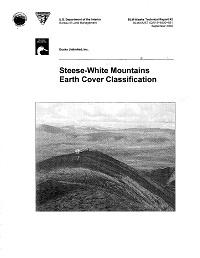Steese-White Mountains Earth Cover Classification

The Bureau of Land Management (BLM) - Alaska and Ducks Unlimited, Inc. have been cooperatively mapping wetlands and associated uplands in Alaska using remote sensing and Geographic Information System technologies since 1988. The goal of this project was to continue the mapping effort for the BLM in the Steese National Conservation Area and the White Mountains National Recreational Area and its surrounding environs. Three Landsat Thematic Mapper (TM) satellite scenes were used to classify the project area into 33 earth cover categories. An unsupervised clustering or seeding technique was used to determine the location of field sites and a custom field data collection card and digital database were used to record field information. A helicopter was utilized to gain access to field sites throughout the project area. Global positioning system technology was used both to navigate to pre-selected sites and record locations of new sites selected in the field. Data was collected on 411 field sites during a 12-day field season from July 18 through August 1, 1997. Forty-one (41%) percent (170) of these field sites were set aside for accuracy assessment. The field data collected in 1997 was supplemented with field data collected by the BLM in August 1998 and the Yukon Charley Project (1997). A modified supervised/unsupervised classification technique was performed to classify the satellite imagery. The most dominant earth cover classes were 39% open needleleaf, 13% woodland needle leaf and 10% mixed forest. The overall accuracy of the major categories was 81%.
